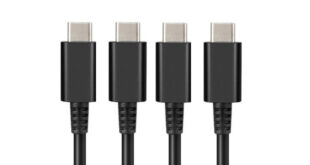Morpheme, Endorphin and Euphoria creator and animation specialist NaturalMotion is known for high-end engines for next-gen machines. So why is it trying to cram all its smart tech into the tiny iPhone? Turns out the two are a fairly good fit, CEO Torsten Reil explains to Develop…
Is there a need for middleware on the iPhone?
We’re seeing a clear trend towards higher production values on the iPhone, so the arguments for middleware – that you save time and money, and can license differentiating technology – are starting to apply to this platform. While the need is only nascent at this stage, fast forward a few years and I think it will be commonplace to use third party game technologies on mobile platforms.
Were you surprised by the device’s power?
We’ve been very surprised by the processing power of the iPhone. For example, even the 3G is able to run our Morpheme animation engine on multiple characters, using the exact same assets as the PS3 and Xbox 360. The 3GS is substantially more powerful again.
How did the Backbreaker iPhone project come about?
The game has been developed by Ideaworks3D in London, with whom we have a middleware partnership for mobile platforms. Backbreaker on the iPhone was a great test and showcase for this collaboration as it runs both Morpheme and Ideaworks3D’s Airplay SDK.
Do you think that the low price points prevalent on the App Store make for decent margins?
Low price points are very attractive as long as there’s a large volume of transactions. A $0.99 price point for a game seems low in comparison, but the iPhone makes up for this with a large install base and extremely low purchase barriers.
Given those low price points, how would you consider amending your pricing structure to appeal to this market?
The games’ per-unit price points aren’t really important for setting middleware prices. Average revenue and risk-profile per title, on the other hand, are. If people don’t make much money per game, they can’t afford to pay much for technology. Equally, if there is high revenue potential but it’s hit-and-miss, the middleware pricing structure needs to reflect that too.
How has the collaboration with IdeaWorks3D worked, both in terms of the iPhone title and the morpheme middleware?
Ideaworks3D approached us with a view to bringing console technology onto multiple mobile devices via their Airplay SDK. As it didn’t take them long to get Morpheme up and running on multiple devices, we looked at a first showcase application together – the natural choice was Backbreaker since we were able to use a wide range of assets created for the PS3 and Xbox 360 version. Ideaworks3D then used Endorphin to create a large variety of tackles, which in turn were connected up in morpheme networks. The iPhone game itself is a variant of the ‘Tackle Alley’ mini-game in the home console version.
You originally announced the partnership with IdeaWorks3D and teased the Morpheme port at the beginning of the year. How has the response been so far?
The response has been great, but I think it will take some time before the iPhone and other mobile devices will rival our console business. This market is moving very quickly however, so we are making sure we are prepared to adapt to it rapidly on all devices, hence the Airplay SDK integration.
How do you think something like Morpheme can help iPhone games reach ‘the next level?’
morpheme on the iPhone lets developers create high-end 3D character animation usually only found on next-gen consoles. And while not all games require high-fidelity characters (such as Flight Control), there is a clear trend towards animation usage, be it in Gangstar, NFL 2010, X2 Football, Backbreaker and many others. We want to make sure we provide developers with the right tools to achieve the necessary quality.
Has learning about the power of the iPhone given you any further ideas?
The iPhone has made us take mobile platforms much more seriously than we did about 12 months ago. It is now clear that our technology can run on a lot more devices than just consoles and PCs. We are looking very closely at this market, not just from a processing point of view, but also with regards to the fact that it finally introduces large-scale digital distribution models. And whilst previously fragmentation on mobile platform has been an issue, technology such as the Airplay SDK can make a single middleware integration available not just on iPhone but on Android, Symbian and other native platforms.
Even with flexible engine and middleware pricing models, however, I am concerned that indie developers on these platforms are being held back by the high cost of DCCs and content generation. We have some ideas how this could be fixed, which we’re currently evaluating.
www.naturalmotion.com

 MCV/DEVELOP News, events, research and jobs from the games industry
MCV/DEVELOP News, events, research and jobs from the games industry



